Fractions Greater Than or Less Than 1/2 -> division
Division
Division is a basic arithmetic operation that involves splitting a number into equal parts. It is the opposite of multiplication. In a division problem, the number being divided is called the dividend, the number by which it is divided is called the divisor, and the result is called the quotient.
Example:
Let's look at the division problem 12 ÷ 3 = ?
- The number 12 is the dividend.
- The number 3 is the divisor.
- The result of the division, which is 4, is the quotient.
Division Terminology:
- Dividend: The number being divided.
- Divisor: The number by which the dividend is divided.
- Quotient: The result of the division.
- Remainder: The amount left over when the dividend is not evenly divisible by the divisor.
Division Methods:
There are different methods for performing division, including:
- Long Division: A method for dividing multi-digit numbers.
- Short Division: A quicker method for dividing numbers, often used with small divisors.
Division Properties:
Some important properties of division include:
- Division by 0: Division by zero is undefined.
- Associative Property: (a ÷ b) ÷ c = a ÷ (b ÷ c)
- Commutative Property: Division is not commutative, meaning a ÷ b is not the same as b ÷ a.
- Identity Property: a ÷ 1 = a
- Zero Property: a ÷ 0 is undefined.
Understanding division is important for solving real-world problems, dividing quantities into equal groups, and working with fractions and decimals.
With practice, students can develop proficiency in division and use it as a foundational skill for higher-level mathematics.
[Division] Related Worksheets and Study Guides:
.◂Math Worksheets and Study Guides Second Grade. Fractions Greater Than or Less Than 1/2
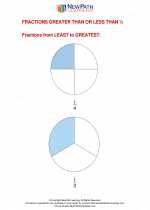
 Worksheet/Answer key
Worksheet/Answer key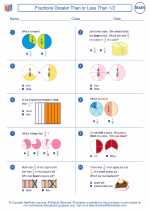
 Worksheet/Answer key
Worksheet/Answer key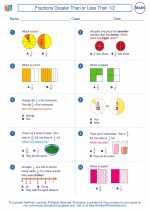
 Worksheet/Answer key
Worksheet/Answer key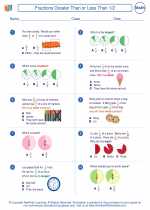
 Worksheet/Answer key
Worksheet/Answer key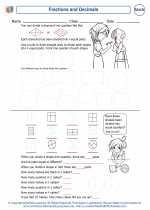
 Worksheet/Answer key
Worksheet/Answer key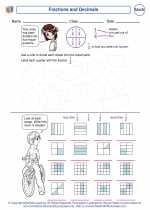
 Vocabulary/Answer key
Vocabulary/Answer key
